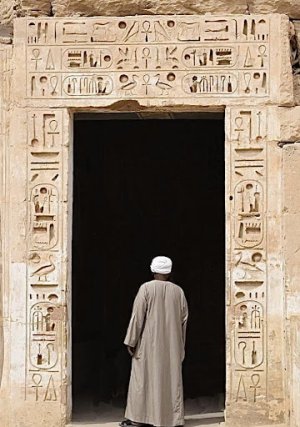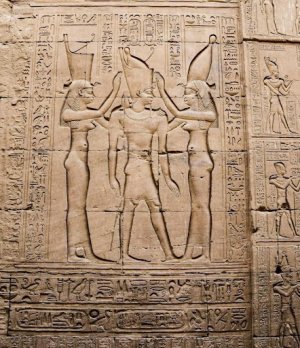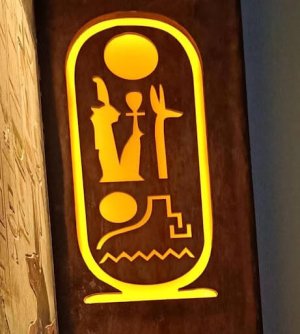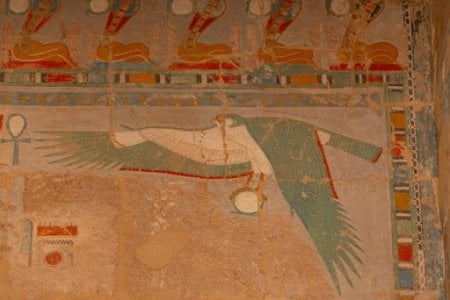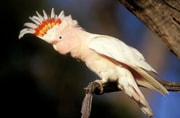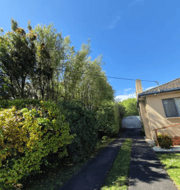Ancient Egyptian Hieroglyphs – Part 3/3
- Replies 1
Note from the Editor:
This article was written for the SDC by psychologist and member @Jan A. Jan A. works part-time, taking on clients under the Medicare Mental Health Care Plans. She works with people of all ages, from children to seniors! She is a member of the Macquarie University Egyptology Society and majored in history with a Bachelor of Arts degree at Melbourne University. Subsequently, Jan A. did an adult education course through Sydney University, learning to read basic ancient Egyptian hieroglyphs.
Missed Part 1? Catch up here.
Missed Part 2? Catch up here.
Welcome to further explorations in Egyptian hieroglyphs! This article builds on the information contained in my previous 2 articles about Egyptian hieroglyphs.
While Egyptian hieroglyphs look to us like a series of decorative pictures, these individual glyphs form a language and writing system that existed and evolved for 3,000 years.
To understand the meaning of hieroglyphic texts and other imagery, it is important to have some idea of the structure of the ancient Egyptian written language.
Some glyphs are phonograms representing sounds. For example, the glyph for the sound 'r' is represented by a mouth shaped to make that sound. Groups of glyphs spell out a word.
Some glyphs are ideograms representing a whole word or concept. A picture of the sun could represent 'day' or 'Ra' (sun god). An ankh sign represents 'eternal life.'
To help clarify meanings, determinatives are used. These are picture glyphs (not pronounced) that tell you something about the word that precedes it.
Egyptian nouns have a gender. Feminine nouns usually end with '-t' 𓏏 but male nouns do not.
Plural is indicated with the suffix '-w' 𓅱 for masculine nouns and '-wt' 𓅱𓏏 for feminine nouns.
Adjectives follow the noun, as in modern-day French. We would write 'good son', but Egyptian grammar writes 'son good'. Adverbs modify other words and provide information about how, when, where or why something happens. They appear in different places in the sentence depending on the intended emphasis.
Verbs in Egyptian grammar do not have tenses in the way English verbs do. They indicate whether an action is completed (perfective), ongoing (imperfective) or about to happen. Other verb forms describe a state of being (stative) or a command (imperative). The context gives clues as to how to interpret the verb. A verb may be combined with a pronoun to say who is performing the action.
The word order in Egyptian is verb-subject-object (VSO). The verb comes first, followed by its subject and then its object. 'I pat the cat' would be written as 'Pat I the cat'.
Some sentences do not have a verb. It is assumed by the context. 'Daughter beautiful' means the daughter is beautiful without the need for 'is'.
Particles and prepositions that connect other words and phrases can define the meaning of a sentence. They are flexible and can change depending on the context.
Importantly, if the text contains the name of a god, that glyph appears first in honour of the god, no matter where it is said in the text. This re-arrangement is called 'honorific transposition', i.e. moving the name to the beginning in recognition of the god.
The above description of basic Egyptian hieroglyphic grammar structure is extracted from this website. If you would like to explore this field further, please consult the website here.
Ancient Egyptian hieroglyphic writing is entirely phonetic, meaning it is written how it sounds. So, 'leek' and 'leak', which are spelt differently in English, would be written exactly the same in hieroglyphs. They told the difference by adding a determinative picture glyph after it to show what word it was intended to be. If we were writing it in English, the version referring to a vegetable would have a small picture of a leek after the word. If it were a drip, we could put a tap with a leak after the word. The words 'bow' (to bend) and 'bow' (a ribbon tied in your hair) would have been written the same, as they are in English. Instead of relying on the context to understand the meaning, as in English, Egyptian writing would have had a determinative after the word to show which one was meant. Further, ancient Egyptians had no capital letters and no punctuation.
Phonetic writing also means that there are no 'silent' letters, as in 'enough' or 'queue', and no double letters, except for the long 'i' vowel sound represented by the two reeds, which is actually just one glyph. Ancient Egyptians did not write short vowels like the short 'e' as in 'terrible' or the short 'a' as in 'catastrophe.' Our spelling lessons would have felt much less terrible and catastrophic if English were written phonetically! (Incidentally, how weird is it that 'phonetics,' meaning something is written as it sounds, begins with a 'ph' when the sound is an 'f'!)
Lorem ipsum dolor sit amet, consectetur adipiscing elit. Quisque in diam id erat facilisis consectetur vitae vel urna.
Ut lacus libero, suscipit auctor ipsum sit amet, viverra pretium nisl. Nullam facilisis nec odio nec dapibus. Integer maximus risus et velit porttitor ullamcorper
Read more for FREE!
Become a member today and join over 200,000 Australians already taking advantage of daily news, weather, petrol costs, games, jokes, deals and more.
-
FREE 400-page Discount eBook upon joining
-
FREE Aussie-made eBook & many more
-
Multiple daily discounts for members
-
No payment required
Register Faster Using
Or Register with email
Already a member?
Attachments
Last edited:

